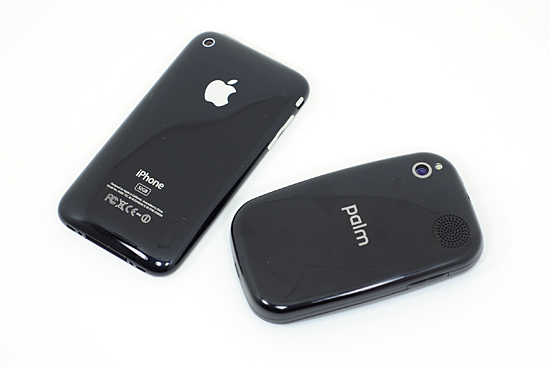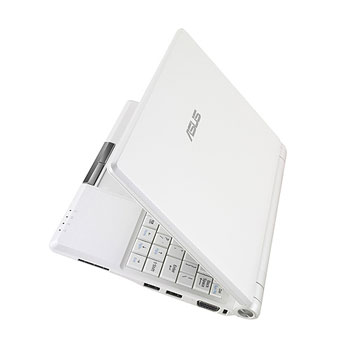The Apple iPad - Anand's Analysis
by Anand Lal Shimpi on January 27, 2010 5:00 PM EST- Posted in
- Smartphones
- Mobile
About a decade ago Mike Andrawes and I kept hoping someone would come out with a device that would make surfing the web on the couch easier than it was. Mike took the notebook route. He kept buying (or stealing from me) notebooks that were cooler, thinner and lighter while still being a notebook, for the purpose of browsing the web.
I took a more extreme route. I tried ultraportables. I bought a Sony PictureBook. It had a Transmeta Crusoe processor in it, which was horribly slow but gave me the form factor and battery life I craved. I put up with a ridiculously impractical screen just to get something small to browse the web and do work on.
Matthew Witheiler, another AnandTech veteran took a different path. He embraced the tablet PC. Matt became our Tablet PC reviewer on AnandTech as he searched for the perfect device. Unfortunately, he never found it.
None of us did. Today we all went back to the tried and true device: the notebook. The iPhone came along and gave us a revolution in the smartphone space. Ultimately it and the devices that followed just complemented our notebooks - sometimes with a new level of frustration as we were now at the mercy of wireless carriers and ridiculously slow SoCs.

The smartphone revolution gave us some great devices
History likes to repeat itself, and that’s what we’ve seen happen over the past two years. The introduction of the netbook brought the journey full circle. People wanted a cheap, light, portable web surfing and light work device - the netbook did just that.
The keyboard and screen issues have been mostly solved. Performance still sucks and part of that is due to the fact that there are no good netbook OSes that are optimized for the level of performance a 1.6GHz Atom can deliver. Most OEMs ship some variant of Windows on these devices, and with less than 2GB of memory and a single-core in-order CPU, that’s just too much to be fast.

Back to ultraportables again
There’s also the issue of storage. Netbooks desperately need solid state storage, but a single 2.5” SSD is often over half the price of a netbook itself. Pair up a slow CPU with not enough memory and a really slow hard drive and it’s not a good combination.
Microsoft, Intel and Apple have all taught me one very important lesson over the past 13 years: if you’re going after a new usage model, you need new technology to tackle it. For Microsoft and Apple that meant a new UI with Media Center and the iPhone. For Intel it meant a brand new microarchitecture optimized for power efficiency. First with Banias (Pentium M/Centrino) and then with Atom.
Netbooks, and to a greater extent tablets, eReaders and smartbooks, are going after new usage models. These aren’t notebook replacements, they are a new category of device designed for a different usage model. The one thing they’ve all been missing is the perfect combination of hardware and software to deliver the whole package.
The one thing Apple prides itself on is doing just that. As one of very few one-stop hardware/software makers, it has the ability to tightly couple UI with physical design. We saw it manifest in its greatest way with the iPhone, and now Apple (or perhaps the media covering Apple) is attempting to recreate the magic with the iPad.

The final frontier?
The device doesn’t ship for another 60 days, but there’s a lot to talk about based on today’s introduction alone.










155 Comments
View All Comments
Mike1111 - Wednesday, January 27, 2010 - link
Why I'm disappointed by the current iteration of the iPad:Display:
- Low resolution (9.7" 1024x768 132ppi), no HD (720p), even lower ppi than iPhone (3.5" 480x320 163ppi), no comparison to Motorola Droid's ppi (3.7" 854x480 265ppi), Nexus One (800x480) or even Kindle DX (9.7" 1200 x 824, 150 ppi)
- No advanced display technology (Pixel Qi etc.)
- No digital TV-Out (Micro-HDMI, Mini DisplayPort etc.)
- For a modern device weird display ratio (4:3), IMHO iPhone's ratio (3:2) would have made more sense
- Glossy
- Plus this most likely means that we won't see a higher resolution screen in this years iPhone (iPad 9.7" with 1024x768 and than just 3 months later an iPhone 3.5" with 800x480 or something like that? No way!).
Storage:
- Only 64GB. Last years iPod touch has already 64GB, iPhone 32GB. I'm sure only a few months after the iPad comes out we'll see 64GB iPhones and 128GB iPod touches.
GPS:
- No GPS in WiFi only model
Sound:
- No stereo speakers (Seriously? On top, just opposite to the bottom one would have been so easy. I mean there's no camera and no telephone speaker up there as in the iPhone, there's got to be room there for a second speaker. I mean there are even tiny dumb phones out there with "decent" stereo speakers, e.g. from Nokia and Samsung).
Battery and Power:
- Only "up to" 10 hours of WiFi surfing (comparable to the iPhone)
Size and weight:
- Bezel too big
- Too thick (0.5"), thicker than iPhone and iPod touch
- Too heavy (1.5 pounds). Engadget already complained about the weight in their hands-on.
Camera:
- No camera, not even a low-resolution front facing one for video conferencing
OS:
- No multitasking, notifications etc.
- Just iPhone OS 3.2? In march/april? So it's unlikely that we will see an update to 4.0 just 3 months later (with the next gen iPhone hardware and OS).
jimhsu - Wednesday, January 27, 2010 - link
10 hours would be a substantial improvement from the iPhone (the 3G/3Gs models at least). I'm lucky if continuous 3G surfing lasts 5 hours (it usually doesn't). Wifi ... maybe 6 hours.Mike1111 - Wednesday, January 27, 2010 - link
Well, officially it's 5 (3G) and 9 hours (WiFi) on the iPhone. So 10 hours via WiFi on the iPad seems comparable.gfxmobile - Wednesday, January 27, 2010 - link
Anad could this possible be the featured SGX 545 "The IP is already proven in silicon in a test chip from Imagination and licensed by a lead partner." from PowerVR website.Does Imagtec PowerVR even have a 45nm core?
The video playback should provide clues to figure out witch version of the PowerVR was used. Though it can be the software that it's crippling it. Since the PowerVR has been demoed on the beagleboard doing full HD decoding.
Apple sucks at giving details. Can't anyone take on of those things apart so we can get some anwsers? GRRRR
Rys - Thursday, January 28, 2010 - link
ImgTec aren't the ones who decide which process technology it's made on. That's up to the licensee and their manufacturing partner for the silicon.There are 45nm PowerVR products in the wild though.
Rindis - Wednesday, January 27, 2010 - link
I think it looks like it has a good chance to do well in the target market, and will do well.Pity I'm not part of that market. ;) What *I* want is something portable that allows blogging/forum commenting on the go. I don't see that working with that form factor, or without a keyboard.
What I want is a netbook. Need to find the money for that. ;)
What I don't get, is why no one's gone the route of turning one of these devices into a phone (software & cell modem + input/output audio port). I mean, sure, it's it's a horrible form factor for just a phone, but if you're going to carry one of these everywhere *anyway*, why not drop the need for the extra device?
kamper - Wednesday, January 27, 2010 - link
Is it true that this thing will be app store only like the iphone and ipod touch? If so, no thanks.jimhsu - Wednesday, January 27, 2010 - link
Honestly, while this offers great entertainment potential, I still can't see this being used at all for productivity.Possible usage cases:
1. Browsing docs/spreadsheets. Works.
2. Creating/editing docs/spreadsheets. Frustrating with documents, near completely horrible with spreadsheets (try entering tables of numbers on that thing).
3. Taking notes. Horrible. Lack of pen input seriously degrades this compared to real tablets. Lack of physical keyboard makes inputting inferior to net/notebooks. Of course, there's also the problem of finding a OneNote equivalent, but "that's a software problem".
4. Running scientific/technical apps (ex. Mathematica, SPSS, CAD/CAM tools) - completely impossible, I assume, with the iPhone OS.
5. Photo/image/movie manipulation. Um... yea.
So ... an entertainment device this is.
Lonyo - Wednesday, January 27, 2010 - link
An entertainment device with a 4:3 screen, which means either stretched content, cropped content, or huge wastes of screen space with blackness.Oh, and very limited outputs (no HD outputs, only VGA up to 1024x768 or composite up to 576p) means no hooking it up to your TV.
So video is out, which leaves web pages and music. Only you probably can't do both at the same time.
AnnonymousCoward - Thursday, January 28, 2010 - link
All very good points.